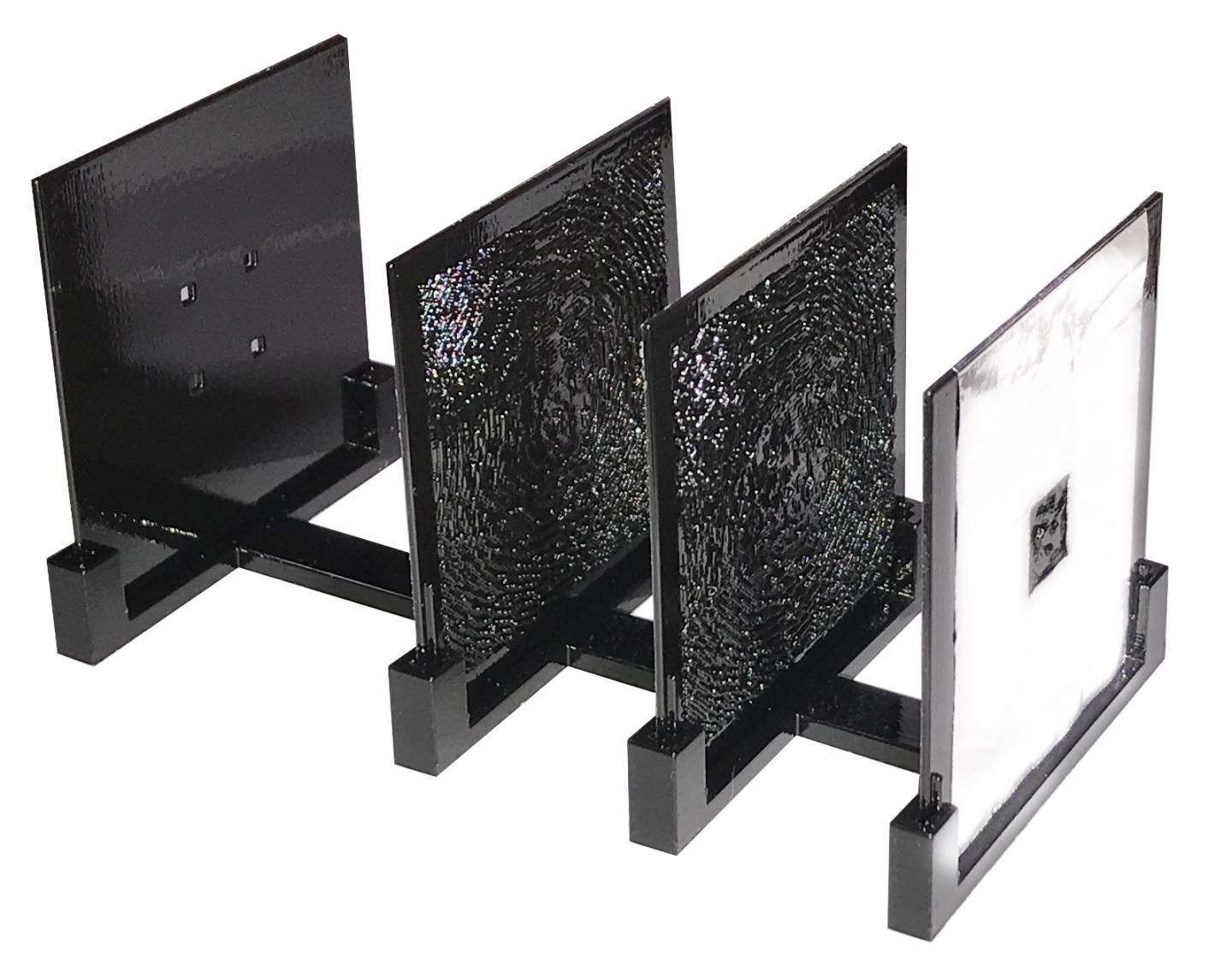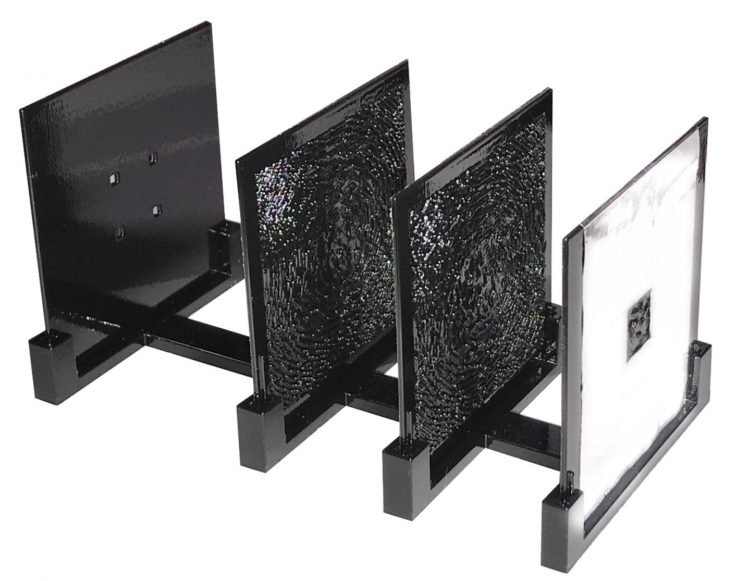
Credit: Ozcan Research Group, UCLA
Diffractive deep neural network is an optical machine learning framework that blends deep learning with optical diffraction and light-matter interaction to engineer diffractive surfaces that collectively perform optical computation at the speed of light. A diffractive neural network is first designed in a computer using deep learning techniques, followed by the physical fabrication of the designed layers of the neural network using e.g., 3D printing or lithography. Since the connection between the input and output planes of a diffractive neural network is established via diffraction of light through passive layers, the inference process and the associated optical computation does not consume any power except the light used to illuminate the object of interest.
Developed by researchers at UCLA, diffractive optical networks provide a low power, low latency and highly-scalable machine learning platform that can find numerous applications in robotics, autonomous vehicles, defense industry, among many others. In addition to providing statistical inference and generalization to classes of data, diffractive neural networks have also been used to design deterministic optical systems such as a thin imaging system.
In these earlier demonstrations, diffractive networks models were developed to process information through a single wavelength and therefore required a monochromatic and coherent illumination source, unlike for example the ambient light which is incoherent and composed of a continuum of wavelengths, making it broadband. Addressing this limitation, UCLA researchers have designed diffractive networks that can process information using a continuum of wavelengths, expanding this all-optical computation framework into broadband optical signals. Published in Light: Science & Applications, a journal of the Springer Nature, UCLA researchers demonstrated the success of this new framework by creating a series of optical components that filter broadband input light into desired sub-bands. These deep learning-based diffractive systems also control the precise location of each filtered band of radiation at the output plane, demonstrating spatially-controlled wavelength de-multiplexing in terahertz (THz) part of the electromagnetic spectrum.
After their design in a computer, these broadband diffractive networks were fabricated with a 3D-printer and tested using a pulsed THz source emitting a continuum of wavelengths between 60 and 3,000 micrometers. The experimental results obtained with these 3D-printed diffractive networks showed a very good agreement with their corresponding numerical designs, highlighting the experimental robustness of broadband diffractive optical networks.
This research was led by Dr. Aydogan Ozcan, UCLA Chancellor’s Professor of electrical and computer engineering (ECE) and associate director of the California NanoSystems Institute (CNSI). The other authors of this work are graduate students Yi Luo, Deniz Mengu, Muhammed Veli, post-doctoral researcher Dr. Nezih T. Yardimci, Adjunct Professor Dr. Yair Rivenson, as well as Professor Mona Jarrahi, all with the ECE department at UCLA.
“Simultaneously analyzing and processing light across many wavelengths present unique opportunities to enhance the inference and generalization capabilities of diffractive optical networks to perform machine learning tasks such as all-optical object recognition, as well as to design deterministic and task-specific optical components, expanding the optical design space beyond the human intuition” said Prof. Ozcan.
This new method is also broadly applicable to different parts of the electromagnetic spectrum, including the visible band, and thus, represents a critical milestone for diffractive optical networks toward their widespread utilization in modern day optical components and machine learning systems, covering a wide range of applications in for example robotics, autonomous vehicles and surveillance.
###
Link to the paper: https:/
Media Contact
Aydogan Ozcan
[email protected]
Related Journal Article
http://dx.






